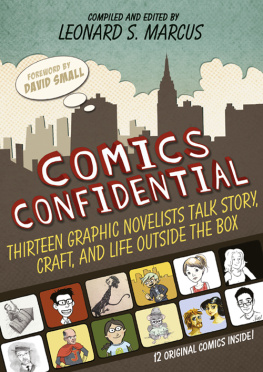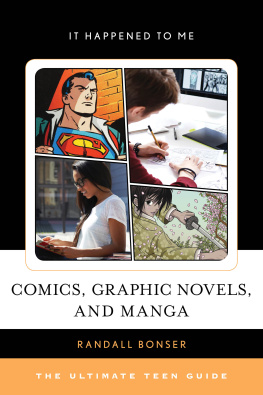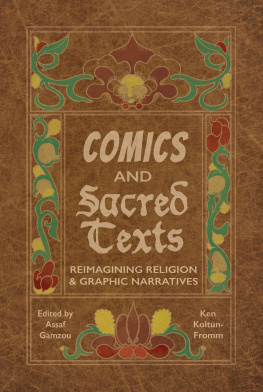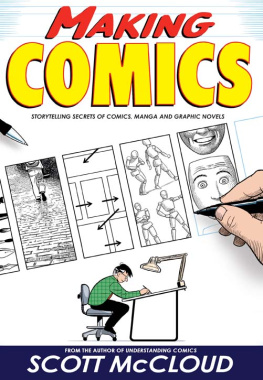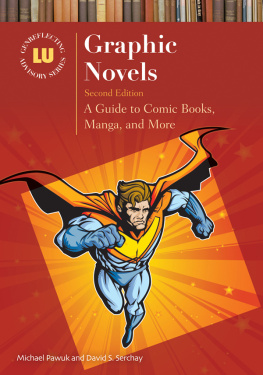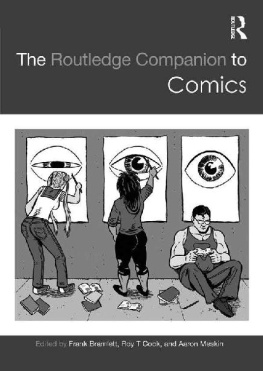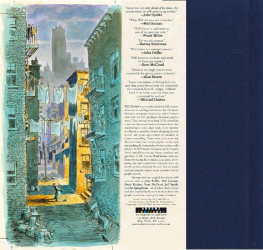
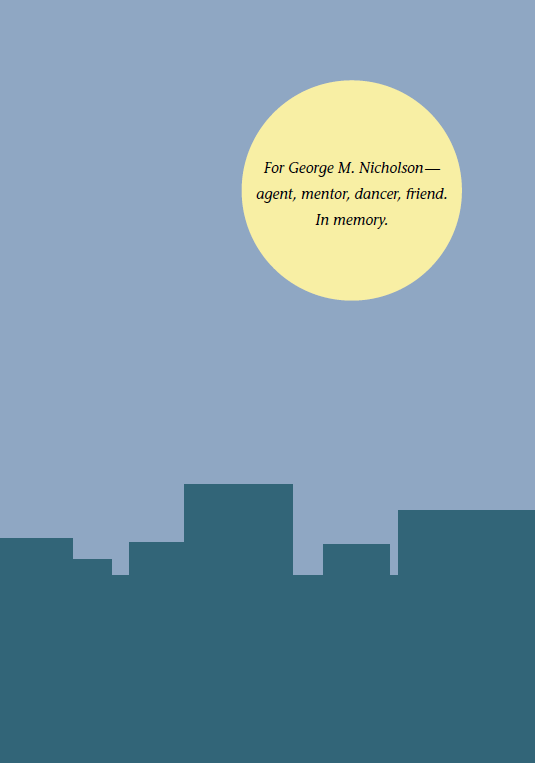

Leonard Marcuss dizzying array of achievements as a writer and historian in the field of childrens literature has made him a revered figure. The fact that he is also modest, discreet, low-key, and a nice guy in person adds to his being one of my heroes.
The thoughtfulness and appreciation that went into his latest collection of interviews, and his use of the phrase Life Outside the Box in his subtitle, inspire these thoughts from my own experience with the graphic novel as the author of Stitches.
I long had it in the back of my mind to write a memoir of my youth. For years I could only imagine this as an extended work of prose, which is to say that it was doomed never to become a book. Drawing, for me, is as natural as breathing, but prose, quite frankly, is hard. When I discovered the graphic novel form, it made my fingers itch to render my memoir in panels equating to frames in a movie. It gave me the opportunity to expand my visual storytelling from the necessarily tight strictures of the thirty-two-page picture book format in which I had long been working.
What, then, did I make? Its not a picture book, not a film, and I certainly wouldnt call it a comic. Rather, it shifts around among all these genres like a blob of mercury, and I felt that shifting motion while I worked. It was an exhilarating experience. I could not lay claim to having done anything truly new, but, to me, it felt fresh.
As Leonard recounts in his introduction, a war of words continues to rage over what this sort of book should be called and how it should be classified. I like to think of Stitches as slow film, but that term certainly doesnt apply to every sequential visual narrative. Who knows what term will finally take hold? All I know is that it was thanks to this new form that my book was, at long last, born.
Deciding where to slot Stitches caused challenges (I once found it in the Crafts section of Barnes & Noble with the books on sewing.) and at least one major debate when it was nominated for a National Book Award in the young adult category. Some saw Stitches as written for adults, while others saw it as a perfect book for teens. It must have been difficult for my publisher, W. W. Norton, to know exactly where to place Stitches, and it became upsetting when self-appointed authorities online blasted it for having been first issued as an adult book, then repositioned in the young adult category to give it a better shot at an NBA. They thought this was covetous. It was! Everyone wants to win a National Book Award. But the dispute was not about the quality of my book; it was about pigeonholing.
We must not denigrate the taxonomists among us. (They are there to tell us which drawer to find our socks in. This is important. ) Nor should we ignore the concerns of marketing departments. What we must never do is listen to these folks while we draw and write. Art-making at its best is a confrontation with the mysterious and the irrational. If we listen to the people concerned mainly with classification or marketing, we end up not making honest and true works of art, but only product, rubber-stamped and made to fit into a prefab box that might as well be a casket.
In so many of the interviews in Comics Confidential, the artists, when asked what they were like as children, tell us that they were nerds. That is code for those who are born to a life perpetually outside the box. Those who grow up on the periphery of normality are like astronauts forever circling the earth in their own private capsules. It is a lonely life, but in fact, the view from up there is better, broader, and more all-encompassing than the average persons. When nerds come to accept and appreciate their condition, when they begin using their typewriters, computers, and art supplies to pass the time in their dark passage, and when, above all, they take advantage of the view, they rule.
I applaud Leonard Marcus and all of the sweet people (some of them my friends) whom he has chosen to honor by interviewing them for this book. Its like a homecoming for life-travelers who are forever in orbit, seeking new forms in which to express themselves.
David Small

A funny thing happened to some of the millions of kids who grew up over the last few decades devouring comic books and the daily cartoon strips they read in their local newspapers. They became comics creators artists and writers who, instead of outgrowing their childhood love for word balloons and spindly action drawings, chose instead to pour their hearts and souls into the genre. Making comics became their career. Even more than that, it became their lifes work. While some realized their dream by taking jobs at big commercial publishers like DC and Marvel, others pursued a less clear-cut path. They simply sat down and started to write and draw, often in the beginning just for the entertainment of their friends. Before long these independent, or indie, comics creators began to meet one another at comics shops and conventions, at book fairs, and via the Internet. They inspired, challenged, and fed off one another. To their amazement, they discovered that artists and writers like themselves and fans too were all around the world. In time book publishers noticed what they were up to as well. Without quite realizing it, these indie artists and writers had invented a new art form a new kind of book for which people at first did not have a name. By the early 2000s, the books were everywhere.
Because the new books (unlike traditional comics) were often a hundred or more pages long and because they generally told a story, some people began calling them graphic novels. The label worked well enough except for the fact that many of the books were not fiction but memoirs, histories, and other kinds of nonfiction. Even so, the name graphic novel had a solid, impressive ring that helped persuade the doubters of which there were a great many at first to give the quirky, at times wholly uncategorizable creations a chance.
In the United States, comic books had always had their critics as well as their fans. No sooner had the first ten-cent action-adventure comics appeared on newsstands during the 1930s than librarians and teachers raised the alarm. These well-intentioned naysayers feared that two-fisted tales about superheroes like Superman and Green Lantern might overexcite young readers. They considered comics a waste of the time that could be better spent on Caldecott and Newbery Medal winners. Children by the millions loved the comics anyway and often read them in secret under the covers at night, when their parents thought they were asleep.
Opposition peaked in the 1950s when an American psychiatrist named Fredric Wertham published a best-selling critique in which he argued that action and horror comics encouraged young people to turn to a life of crime. The U.S. Senate held hearings to determine if this was true. Out of fear for what might result from the investigation, the publishers of comic books established the Comics Code, a self-censoring scheme that set strict guidelines for acceptable story content and put a damper on comics creativity for years to come. Against the backdrop of this history of fearsome opposition, the new graphic novelists had their work cut out for them to win an audience and respect for their indie enterprise.

